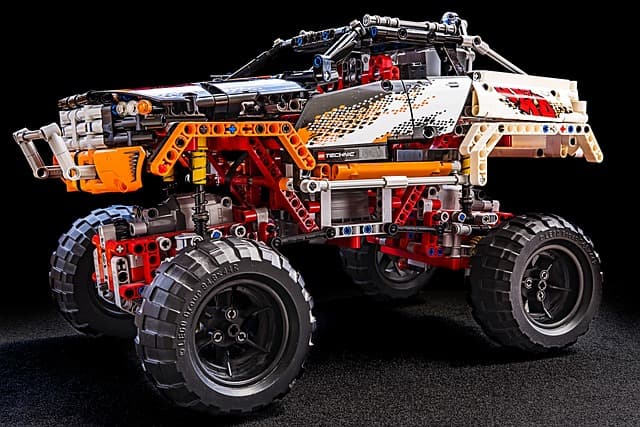Robotics for Students Based on Lego WeDo 2.0

WeDo 2.0 course for children 7-10 years old – the set is programmed using the visual programming blocks of the Lego Education WeDo environment.
Format
Face-to-face lessons in a group at a selected time according to the group’s schedule
Structure
The course consists of modules. In the module 12 lessons of 90 minutes
Group
Groups formed by age of students
Age
For children and teenagers from 7 to 10 years old
The level
The course is suitable for beginners and advanced users
Who is the course suitable for?
Your child always sits at the computer
This course will help you learn basic programming skills
Your child loves to play games and has always dreamed of making his or her own.
If your child is unfamiliar with the programming environment, start at the beginning of the course
The child is already into programming
If your child has studied at another school before, start at an advanced level
The learning process
See the video to see how PIXEL is learning
Syllabus
The program includes: theory, practice and problem solving. We regularly collect feedback and continually improve our program
Gamification of the learning process
During the learning process, the student receives prizes for results. Further motivation to learn
Course program
Module 1. Robotics for children WeDo 1 – basics of robotics
Children in this course are introduced to the Lego Education WeDo 2.0 set and master basic programming skills, put them into practice, and learn how to work in teams and invent their own designs.
In each lesson, children walk through a device from the real world and the principles of its operation, and then assemble it and program it.
The set is programmed using the visual programming blocks of the Lego Education WeDo 2.0 environment. This environment is made so that children without programming skills can control robots and later in the educational process can use all the blocks that are available in this environment.
At this stage the children will learn the basics of programming. At the end of the course, they will learn:
1) how to start and stop motors on their own;
2) how to control the robot with sensors;
3) concepts such as Expectation, Cycle, mathematical probability, and more.
Levels 1 and 2 are necessary for the consistent development of the child, which improves his adaptation to the computer (programming).
Level 1 introduces children to the basics of construction in a game form, as well as developing fine motor skills and associative thinking.
An example of a lesson
Theme: “The Grabbing Device”. Children learn how cardboard is made, watch a visual video about its production, and understand the principle of operation. They then assemble it, understanding each mechanism, and program its operation.
Equipment
Lego Education WeDo 2.0 constructor and WeDo 2.0 programming environment are used for teaching
Methodological plan of the module:
- Introduction to robotics. Motor units; Indications;
- Time waiting;
- Tilt sensor expectation;
- Waiting for distance sensor;
- Cycle;
- Screen background and sound;
- Controls;
- Block random number;
- Assertion Tasks;
- Preparing for a project activity;
- Project.
Children work in pairs.
Module 2. Robotics for Kids WeDo 2 – Advanced WeDo
Children will continue to learn the blocks of the Lego Education WeDo 2.0 programming environment and apply this knowledge to create robot control programs.
Emphasis is placed on concepts such as:
1) “Mathematical operations” that are available in the programming environment are addition, subtraction, multiplication, and division;
2) Displaying information on the screen;
3) Application of sensors to calculate and get the result.
Module Methodological Plan:
- Repetition;
- Screen Size Block;
- Math Block;
- Block “Screen”;
- Block “Screen Input”;
- Receiving information from the sensors;
- Transmitting information from the sensors;
- Mail Block;
- Combining topics that have been passed;
- Comments;
- Consolidation of Passed Topics;
- Preparing for the project session;
- Project.
Children work in pairs.
Module 3. Robotics for children WeDo 3 – mechanical
What do we need gears for? Why are there so many of them? What is this “transparent stuff?” In this module, children will learn or remember mechanisms such as gears, worms, or rack and pinion gears. They will learn how they work and be able to use them independently in their projects. Children will also solve problems and recall the already learned programming blocks of the Lego WeDo 2.0 environment.
Module methodological plan:
- Repetition;
- Increasing gear;
- Reducing gear;
- Angular gear;
- Worm gears;
- Rack and pinion gears;
- Belt transmission;
- Crank mechanism;
- Cam Mechanism;
- Lever mechanism;
- Preparation for the project activity;
- Project.
Children work in pairs.